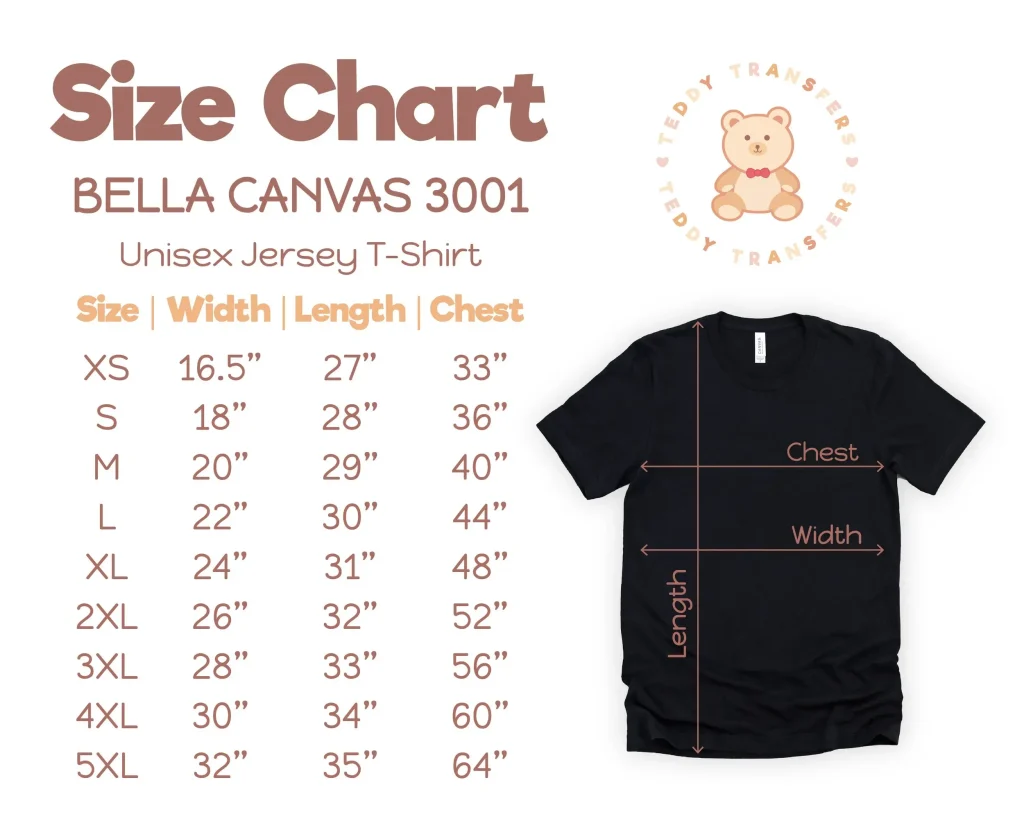When it comes to custom printing, the **DTF transfer size** is a critical element that can greatly affect the outcome of your apparel projects. Direct-to-Film (DTF) technology is praised for producing high-quality, vivid designs on fabrics, making it a popular choice for custom apparel creators. Selecting the right size for your DTF transfer ensures that your design not only fits the garment perfectly but also maintains the high standards of DTF printing quality. The relationship between design size and the garment plays a crucial role in achieving a professional and aesthetically pleasing final product. In this guide, we’ll delve into the nuances of choosing the perfect size for DTF transfers and how this decision contributes to the overall success of your printing endeavors.
In the realm of custom apparel creation, understanding the appropriate dimensions for Direct-to-Film transfers is essential for successful outcomes. Known for its ability to create stunning graphics, this innovative printing method offers numerous possibilities for garment design. The process of determining the suitable dimensions for your transfer can significantly influence the visual impact and professionalism of your finished product. As you navigate your custom projects, various considerations such as garment style, design intricacies, and target audience preferences will guide your decision on DTF transfer sizing. This exploration into transfer dimensions will help you harness the full potential of DTF technology, ensuring your designs capture attention while resonating with your market.
The Importance of Selecting the Right DTF Transfer Size
When embarking on custom printing projects, the importance of choosing the correct DTF transfer size cannot be overstated. This choice significantly influences both the visual appeal and the functional effectiveness of the final product. DTF transfers are known for their ability to produce vibrant colors and intricate designs, making them a preferred choice for custom apparel. However, if the size of the transfer does not correspond well with the dimensions of the garment, the overall effect can be diminished. Getting this aspect right is crucial; a properly sized transfer enhances visibility and detail, turning a simple garment into a standout piece.
Moreover, understanding the size functionality in DTF printing is vital for maintaining a professional appearance in custom projects. If the transfer is too large, it may overshadow the overall design of the garment, appearing overwhelming or unbalanced. Conversely, a transfer that is too small might lack the visual impact required to capture attention. Thus, striking the right balance between size and design not only impacts aesthetics but also reflects on the quality and care of the custom printing work.
Key Considerations for DTF Transfer Size
When determining the optimal size for your DTF transfer, several key considerations should be accounted for. Firstly, accurately measuring the garment area designated for the transfer ensures that the printed design aligns properly with the fabric, enhancing both quality and presentation. For instance, a standard adult t-shirt typically accommodates DTF transfers that range from 10 to 12 inches, depending on the complexity of the design and the desired visual impact. Keeping in mind garment dimensions is a fundamental step that can dictate the success of your custom apparel.
Additionally, the nature of the design itself plays a central role in deciding the size of your DTF transfer. Intricate designs may necessitate a larger transfer to ensure that details are clearly rendered and visible, while simpler designs could effectively maintain their essence in a smaller format. Thus, when planning your print size, consider the intricacies involved to captivate your target audience without compromising on quality.
DTF Printing Quality: Size and Aesthetics
The quality of DTF printing is closely tied to the size of transfers used, with aesthetics being a primary concern for custom projects. A correctly sized DTF transfer can illuminate the vibrant colors and details of a design, allowing it to shine on the garment. Conversely, misjudging the size can lead to a washout of colors, rendering graphics less appealing and diminishing their visual clarity. Attention to size not only plays into the visual presentation but also the durability of the print.
An insightful approach to maintain the quality of DTF prints includes understanding consumer trends and preferences in design sizes. Current fashion inclines toward bold graphics, especially for youth-oriented apparel, while adult items might favor subtler, more refined prints. By aligning your transfer size with these trends, you can ensure that your apparel reflects contemporary styles while maintaining high quality in DTF printing.
Practical Tips for Selecting DTF Transfer Size
Selecting the right size for DTF transfers involves practical steps that streamline the printing process. One effective strategy is to consult with the printing service beforehand. Understanding any size limitations or recommended guidelines can prevent potential issues during production. Furthermore, being aware of how your approach aligns with printing capabilities will help you maximize both efficiency and quality.
Conducting test prints represents another critical practice in determining DTF transfer size. Testing different sizes not only allows for visual experimentation on various fabric textures but also helps in assessing how colors react under different circumstances. This pre-production step can significantly improve the final outcome, ensuring that designs not only look great on paper but also translate effectively onto the actual apparel.
Aligning DTF Transfer Size with Design Trends
In the ever-evolving world of custom apparel, staying aligned with design trends can greatly influence the success of your DTF projects. Larger graphics are increasingly favored among younger demographics, lending a bold statement to their clothing. However, more refined, smaller sizes are often preferred in adult fashion scenarios, which underscores the need to research current market tendencies to make informed size decisions. Understanding who your target audience is can guide your transfer size choices to provide designs that resonate well with consumers.
Moreover, being aware of design trends helps to position your custom printing business as one that is in tune with customer preferences. This awareness ensures that your DTF transfers not only meet functional standards but also appeal aesthetically to the market. Adapting your transfer sizes to current trends can ensure that you produce clothing that not only looks good but also sells well.
Best Practices for DTF Transfer Sizing
To ensure the successful execution of DTF printing projects, adhering to best practices for transfer sizing is essential. First, start with precise measurements of the location on the garment designated for the transfer. Accurate measurements are the foundation of a successful design, allowing for optimal fit and visual appeal. Consulting with experienced printers can further refine these measurements, as they bring invaluable insight based on their past experiences with various garment types.
Testing various sizes on the actual fabric is another practice that can lead to informed decisions. By employing test prints, you can see firsthand how different sizes work with your specific designs and the chosen fabrics. This proactive approach will help avoid costly mistakes, ensuring that you select the best DTF transfer size for a polished and professional final product that meets both quality standards and consumer expectations.
Frequently Asked Questions
What is the ideal size for DTF transfers in custom apparel?
The ideal size for DTF transfers in custom apparel typically ranges from 10 to 12 inches for adult t-shirts. The exact size should align with both the design’s complexity and the garment’s dimensions to ensure optimal visual impact and professional appearance.
How does DTF transfer size affect printing quality?
The size of the DTF transfer directly influences printing quality. A larger transfer can accommodate intricate details, ensuring clarity and vibrancy in the final product. Conversely, a transfer that is too small may not effectively showcase the design, leading to a less impressive outcome.
What factors should be considered when choosing DTF transfer sizes?
When choosing DTF transfer sizes, consider the garment’s dimensions, the design style, the intended audience, and current market trends. It’s crucial to measure the application area on the garment to ensure the transfer fits appropriately and enhances the overall aesthetic.
Can I resize my design for DTF transfers easily?
Yes, resizing designs for DTF transfers is possible, but it requires careful consideration. Ensure that the resized design maintains its clarity and detail. Testing different sizes through sample prints can be beneficial to determine the most effective size for your specific design and fabric.
Do different garments require different DTF transfer sizes?
Yes, different garments require varying DTF transfer sizes. For instance, a standard adult t-shirt usually accommodates transfers ranging from 10 to 12 inches, while children’s apparel may need smaller sizes. Always adjust the transfer size based on the specific dimensions and style of the garment.
What is the relationship between DTF transfer size and design visibility?
The relationship between DTF transfer size and design visibility is critical. A transfer that is too small may render intricate designs invisible or unclear, while a larger transfer can enhance visibility and impact, making it vital to find a balance that complements both the garment and the design intent.
| Key Points | |
|---|---|
| Understanding DTF Transfers | DTF technology allows high-quality designs to be printed onto fabrics efficiently, enhancing durability and color saturation. |
| Choosing the Right Size | Accurate measurements ensure that the transfer aligns well with the garment and design, balancing visibility and aesthetic appeal. |
| Impact on Appearance | A well-sized transfer enhances item appearance, making size an essential component in design and audience appeal. |
| Practical Considerations | Consulting with printing services and testing prints helps navigate size limitations and optimizes designs. |
| Best Practices | Measure precisely, consult professionals, conduct test prints, and align with current trends for optimal results. |
Summary
DTF transfer size is a critical factor in the success of custom printing projects. By carefully considering garment dimensions, design styles, and consulting with printing professionals, you can create visually striking and durable products. Utilizing test prints and staying updated on design trends can further refine your approach, ensuring that your DTF transfers meet both aesthetic and functional requirements. For anyone looking to elevate their custom printing, mastering DTF transfer sizing is an essential step.

